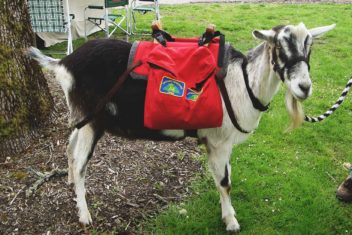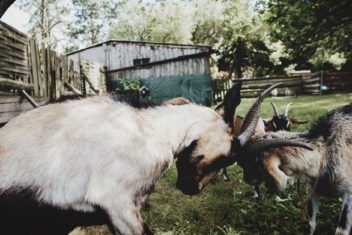Are you a newcomer to keeping goats and wondering how you’re going to effectively confine goats and keep these adorable critters safe? Maybe you’re still in the planning stages of raising goats, but all you’ve heard is how easily they escape?
Goats are beautiful creatures, but they do require specific fencing options to confine them as they can be both destructive and wildly inquisitive. I’m going to share with you what your options are and bring a few things to light you should consider before deciding on the right fencing for your goats.
Here are the fencing options and considerations you should bring into play when considering how to confine goats:

Fencing Options
Regardless of what type of fence you choose, your fence should be between 4-5-feet in height. The larger the breed, the taller the fence.
However, if you’re raising a smaller breed of goats, be sure to consider a fence which is durable at the bottom because they’ll be more likely to squeeze under it. With these points in mind, here are the fencing options you can choose from:
1. Woven Wire Fence
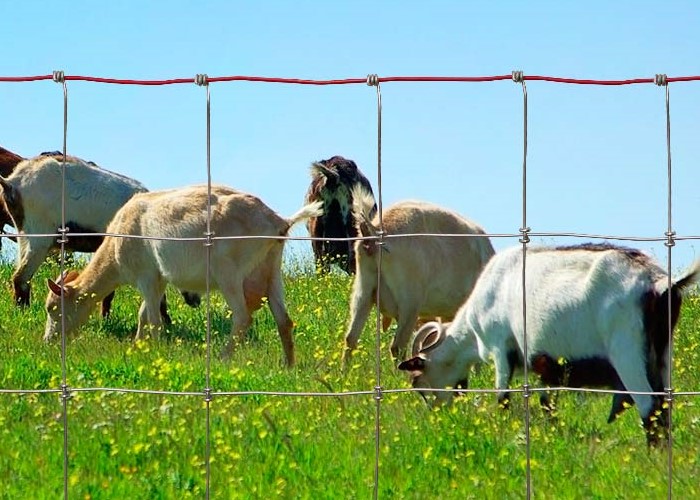
Woven wire fence is a heavy-duty fencing option with larger grids. This style of fence is pricier and would work best if your goats aren’t being raised on a large pasture area because of the expense of the project.
When we first began keeping goats, this was the second style of fence we chose. We expanded our goat area and used this for the expansion.
Our goats were kept in a wooded area and this style of fence kept them where they were supposed to be. It wasn’t a large expansion which made this an affordable option. If you’re someone who worries about your goats darting through the fence, this style of fencing will keep them where they’re supposed to be.
If you have goat kids, the larger grids of a woven fence could prove problematic because it’s possible for these small goats to fit through them. It’s also easier for goats to get their heads stuck in this type of fence.
The sturdiness of this style of fence can handle goats rubbing against it, racking their horns on it, and it makes it more difficult for the goats to squeeze under it.
2. Welded Wire Fence
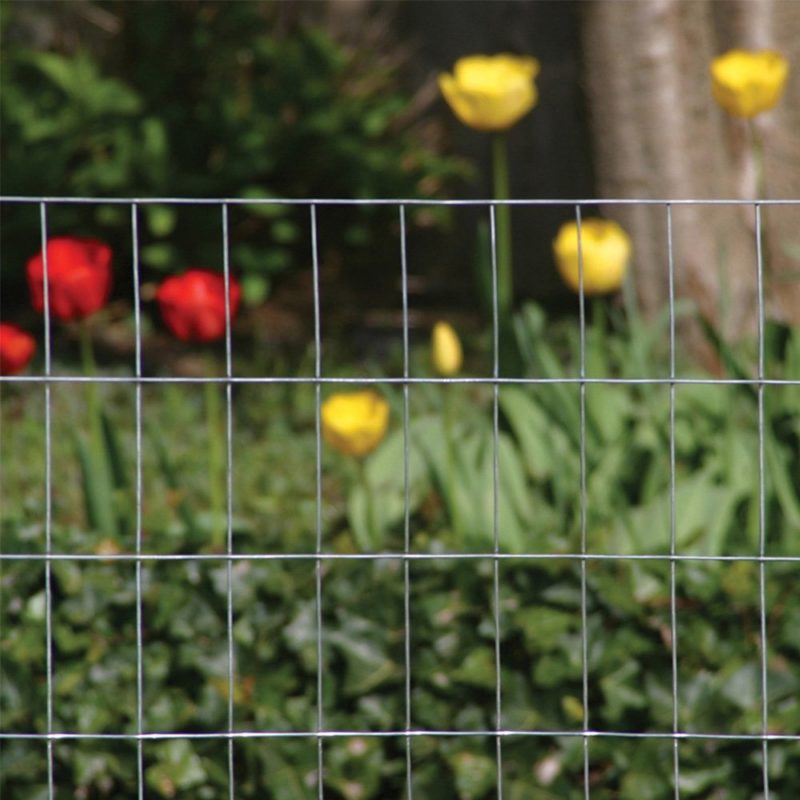
Welded wire fence is like the woven wire fence. However, it isn’t made quite as durable. The grids are smaller, but the wire is thinner.
This style of fence is less expensive than woven wire fencing which makes it a good option if you’re fencing in larger areas.
It’s also a good option if you have goat kids because the grids aren’t big enough for a small goat to fit through them.
This was the first style of fencing we went with when we first started raising goats. However, when putting up this style of fencing, you must find a way to secure the bottom of it.
We used large slabs to hold the fence to the ground because goats can easily ruffle the bottom of this style of fence and squeeze beneath it.
It doesn’t hold up well to goats rubbing against it or racking their horns on it. Yet, it is more difficult for goats to get their heads stuck in this style of fencing.
3. Chain Link Fence
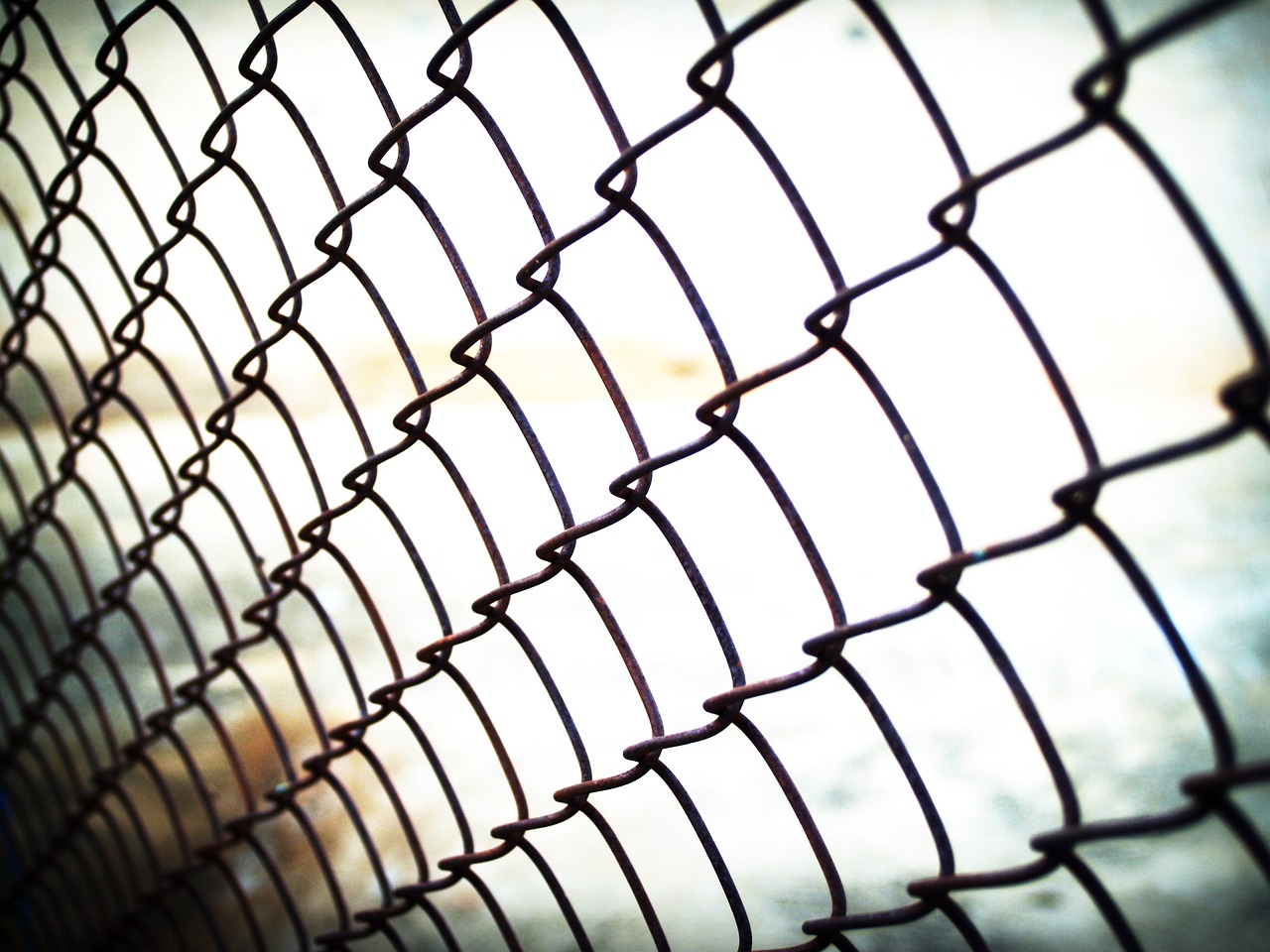
Chainlink fencing is a great option for containing your goats. The biggest drawback is it’s expensive. If the budget doesn’t bother you, it’s a great option.
This type of fencing is easy to assemble and is highly durable. It’s difficult to escape, can handle goats rubbing on it, it can handle the racking of the horns on it too.
Chain link fencing has small enough grids where goat kids can’t escape through them, and it’s durable enough goats couldn’t ruffle it at the bottom to escape beneath it.
If you must ensure your goats don’t leave their area, this style of fencing would be a step towards achieving this goal.
4. Electric Fence
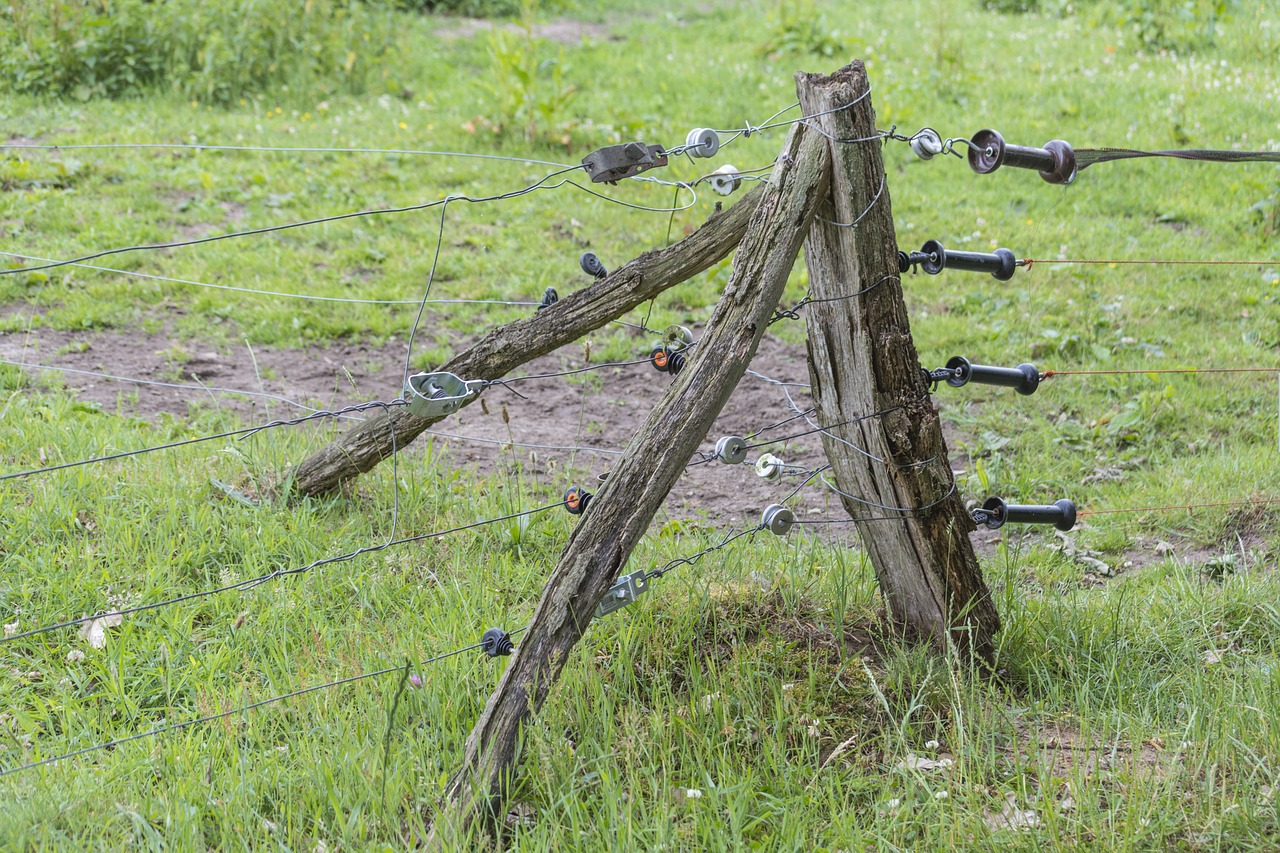
This is the style of fence I use currently to contain my goats and have used it for over 2 years now. I wish I had gone with this option from the beginning because it would have saved us a great deal of money and headache.
Our electric fence is 5 wires high. This ensures goat kids won’t go underneath it and our larger goats won’t go over the top of it.
Electric fencing is inexpensive. The expense comes when you purchase the charger. We tried a solar charger at first and our goats rubbed up against it and acted as though they were getting a massage.
We learned to go with a higher voltage charger which does require electricity. Our current charger pushes anywhere from 7,000-10,000-volts. Our billy tested it once with the tip of his nose and hasn’t attempted it since. He also made sure the girls knew not to touch it either.
The type of charger you use can make all the difference in your experience with electric fencing. This style of fencing is easy to install too.
However, the greatest drawback is it’s only a mental barrier. If you have goats that are willing to test the boundaries, it won’t contain them. You can avoid this by making sure you run enough strands and keep the lines tight.
This will make it nearly impossible for a goat to run through it without getting shocked. With a high enough voltage, they won’t try it twice.
We also love this style of fencing because it’s a deterrent for predators. The style of charger we purchased was meant to hold off bears and other large animals.
Plus, it looks tidy. We have a few acres fenced in for our goats to graze, and an electric fence allows us to contain our animals while still maintaining a nice appearance for our home.
Fencing to Confine Goats’ Kids
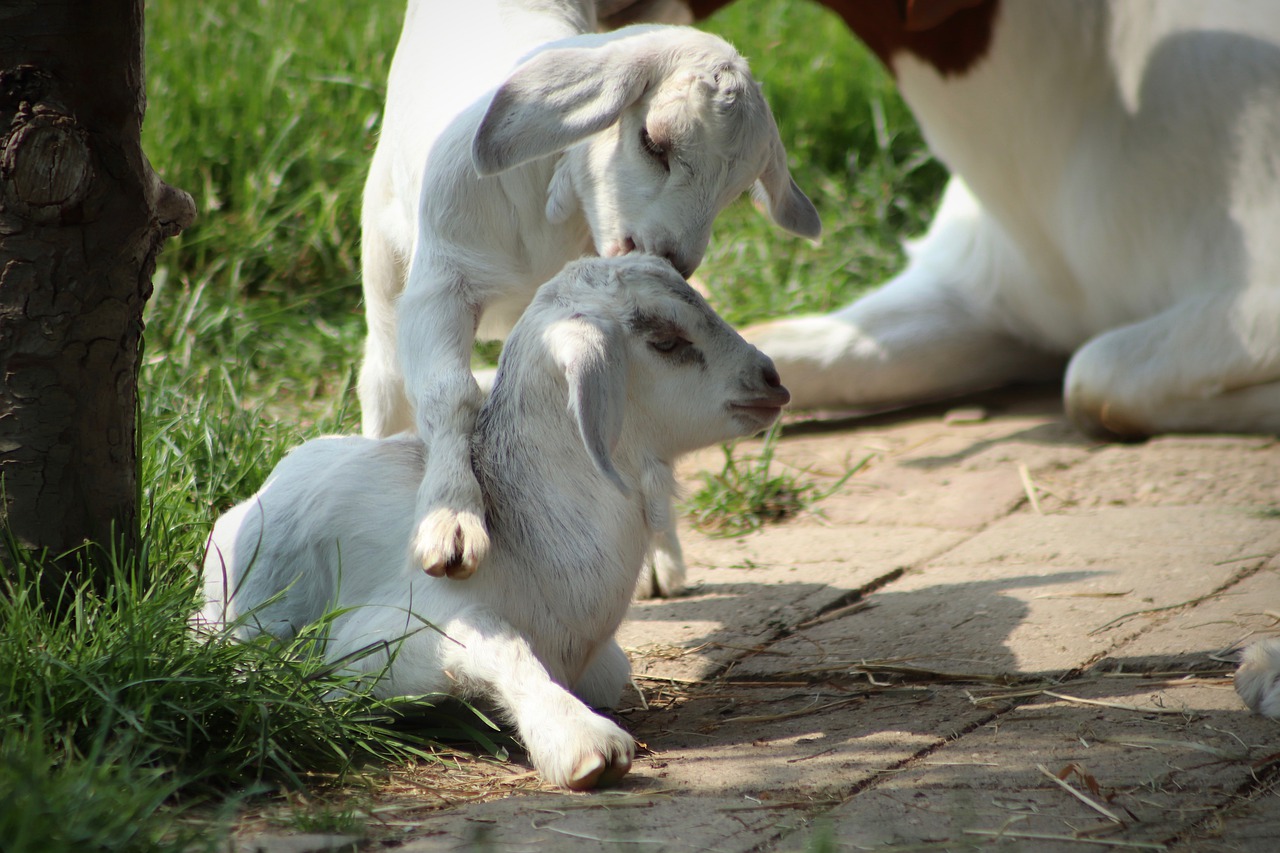
If you’re raising goats from babies, make sure they’re given a safely fenced area. Without it, they’ll get into plenty of trouble.
It also makes them an easy target for predators. Therefore, use a style of fencing which they can’t fit under, and they won’t test.
Check for holes in the fence daily and give them plenty to do. If goats are left to their own devices, it will lead to trouble for you.
In this situation, it would be best to choose a woven fence (if only for temporary use) to make sure they don’t end up where they don’t belong.
We had a set of orphaned twins a few months ago which made their way through the electric fence because they weren’t heavy enough to be grounded.
This meant the electric fence didn’t impact them. Luckily, they stayed with the herd and as they grew older, they began feeling the effects of the electric fence and quit going through it.
If you don’t have a herd, you’ll need an area with wire or chain link fencing to contain them.
However, if you have babies born in the herd, you shouldn’t fear an electric fence. The mother will warn her baby about the shock, and they usually won’t leave their mom.
As they become bigger and more adventurous, if you run the wire lower to the ground, they won’t be able to make it between the wires without being shocked.
Keep these tips in mind when choosing how to best fence your goat kids in your goat set-up.
Gate Options
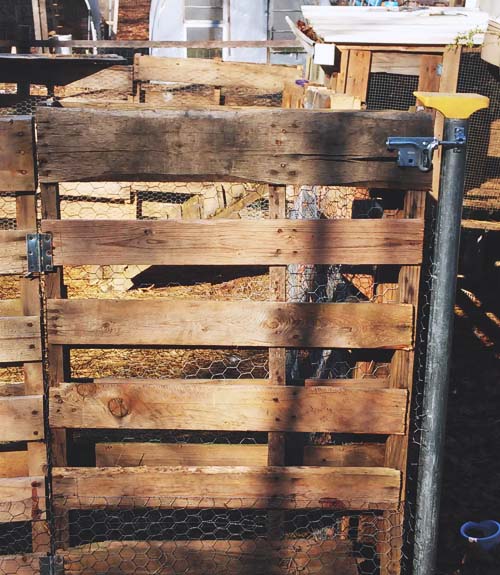
There are multiple options for gates when you confine goats. Our first gate was a homemade gate made from pallets.
We raise smaller breed goats, and this was enough to keep them in their space. If using this style of gate, the latch must be durable. Goats will ram gates and push on them. Use a latch which can’t be broken and opened under this pressure.
Whether you use a chain-link fence or not, you can use the chain link fence gate. This style of gate is durable, can be purchased and easily installed, and will last for a long time.
We currently use a livestock gate. You can either purchase a wire-filled livestock gate or cover the gate with a cattle panel.
It’s important to add some type of wire or fencing to the gate with grids to make sure the goats can’t fit through the holes in the gate.
Installing Fence Posts
You’ve made your decision as to which style of fencing will work best for your situation. Regardless of the type of fence you choose, they all require fence posts.
How do you go about installing these fence posts? It’s easy and here’s how you get the job done:
1. Dig the Hole
When putting up fence posts to confine goats, it’s important to determine where your corner posts will be. Once this has been decided, the posts should be spaced approximately 6-feet apart.
Walk off your fence before digging holes and mark where each post should go. When you know where you’re going to place the posts, get to work with your post hole diggers.
Dig a hole deep enough to where one-third of the post will be in the ground. This makes the posts durable when under pressure from your goats or the elements.
2. Insert Posts and Add Concrete
Once the holes have been dug deep enough, set the posts into place. Have a friend hold the posts vertically while you put the dirt back in the hole to secure the post.
When done, dump quick-drying concrete into the hole. Add water to the concrete once it’s in place. Allow the concrete to dry overnight before continuing with your fence build.
Stop Leaning on My Fence!
One of the biggest annoyances when we first began raising goats was how pretty our woven fences looked until the goats started leaning all over them.
The posts didn’t move, but the fence would get bulges in it. How can you prevent this from happening to your fence? Here are a few tips:
1. Hot Wire
A goat won’t rub against a hot-wired fence if the charge is strong enough. Even if you don’t want a fully electric fence, consider running a piece of hot-wire in specific spots of the fence to keep them from rubbing against it.
This will ensure your fence doesn’t get the unsightly bulge from them brushing themselves and putting their weight in different areas.
2. Give Them a Rubbing Station
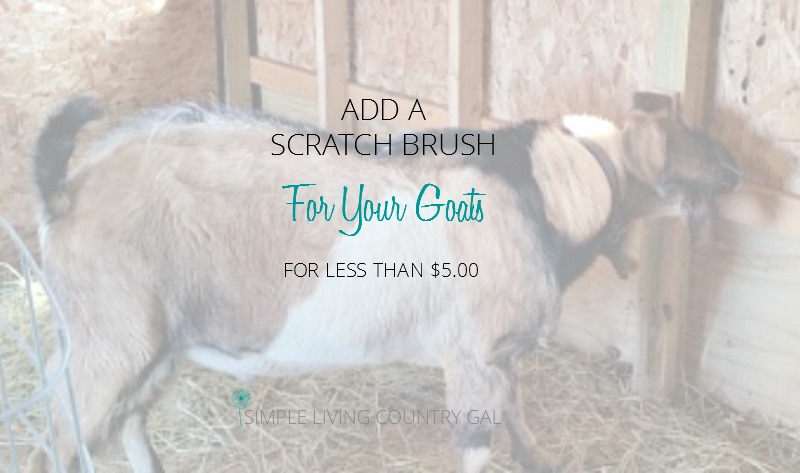
If you don’t want your goats to rub on your fence, give them a designated space to rub. If you’ve been around the internet for long, you’ve most likely seen the idea of adding a thick bristled broom without a handle to their gate.
Attach only the broom head and zip tie it or wire it to your gate or the side of their barn. This gives them a place to rub against to get brushed and scratched. They’ll enjoy it and leave your fence alone. If you have multiple goats, you’ll need multiple brushing stations.
3. Fence Within a Fence
Another way to protect your fence is to build a fence within a fence. You could put a 2 x 4 fence directly in front of your welded fence. This would give a nice place to hang feeders or even add the aforementioned brushing station.
Yet, this wouldn’t allow them to push up against the woven fence. It would add a nice layer of protection and make it difficult for your goats to escape.
4. Put the Fencing on the Inside
Even if you can’t stop your goats from rubbing against your fence fully, you can make sure you put the fencing on the right side of the fence posts.
Make sure when running welded wire, you place it on the inside of the fence posts. If the goats push the wire, they won’t be able to push it away from the fence posts.
5. Pool Noodles
Do you have a goat who finds pleasure in racking their horns against your fence? Is it creating large gaps in your wire fence?
You can deter this by cutting up a pool noodle and slipping it over the goat’s horns. This will make it difficult for the goat to ram or rack their horns on anything.
6. The Human Factor

Let’s face it, you can confine goats to the best of your abilities, but a forgetful family member may undo all that hard effort without a thought.
To help remind any visitors or wandering children to always keep your goats safe, this humorous notice may be what you need.
If you were worried before about how you were going to go about confining your goats, hopefully, this guide has given you a few more ideas, and you’ve gained confidence on the matter.
There’s no one-size-fits-all answer to confining goats. You must take what you’ve learned and apply it the best you can to your situation.
Your ideas may need to be adapted over time, but you’ll soon learn which is best for you and your goats.





